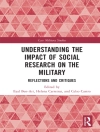The interfacing of man-made electronics with redox proteins and enzymes not only tells us a great deal about the levels of sophistication active in biology, but also paves the way to using it in derived sensory devices. Some of these have already had a profound impact on both clinical diagnostics and the quality of life enjoyed by those unfortunate enough to live with disease. Though much remains to be learnt about controlling and optimising these interfacial interactions, their potential uses are, if anything, growing. Written by leaders in the field, this is the only book to focus on the generation of biosensing interfaces with analyses and control at the molecular level. Some of these are enzyme based, others associated with the generation of surfaces for protein-protein recognition. Summaries of state-of-the-art investigations into the interfacing of structurally complex molecular species with electrode surfaces are included along with their design, analysis and potential application. Studies into the 'wiring’ of biomolecules to man-made surfaces through the use of delocalised 'molecular wires’ or carbon nanotubes are detailed as are the application of surface chemical and genetic engineering methods to the construction of robust, orientated biomolecular monolayers.
Spis treści
Chapter 1: The Mononuclear Molybdoenzymes: potential applications in redox enzyme biosensors;
Chapter 2: Scanning Probe Analyses at the Bioelectronic Interface;
Chapter 3: Electrical Interfacing of Redox Enzymes with Electrodes by the Surface Reconstitution of Apo-Enzymes;
Chapter 4: Single-wall carbon nanotube forests in biosensors;
Chapter 5: Energizing redox enzymes through substrate surface preparation and wiring;
Chapter 6: Cytochromes P450s: Tayloring a class of enzymes for biosensing;
Chapter 7: Label free field effect protein sensing;
Chapter 8: Biological and Clinical Applications of Protein Biosensors
O autorze
Dr Jason Davis (University of Oxford) has pioneered the application of scanning probe and fluorescence imaging technology to the analysis of bioelectrochemical interfaces; an understanding and control of which is clearly highly beneficial to the development of improved biosensing devices. From the early days of such studies, carried out with Professor Allen Hill FRS, his work has been refined to a level where single, active enzymes and proteins on electrode surfaces can be scrutinised under physiological and electrochemically-controlled conditions. Ground-breaking genetic methodologies are being applied to the generation of enzyme, protein or aptamer molecules which can be self-assembled, in an active form, on metallic electrode surfaces. His research group are also actively engaged in the assembly and construction of host-guest coordination complexes on surfaces, electroanalysis, molecular manipulation and molecular electronics. The group have published more than 80 papers in international journals.












